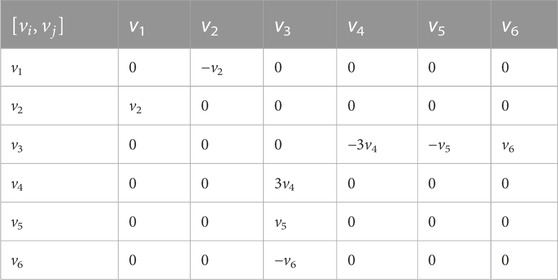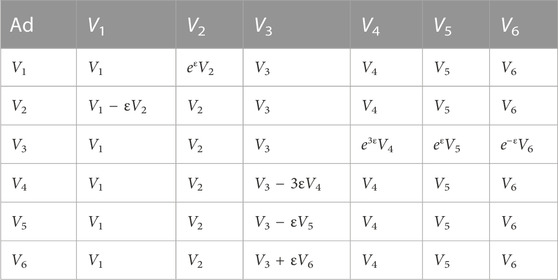- School of Mathematical Sciences, Liaocheng University, Liaocheng, China
In this article, (3+1)-dimensional generalized Shallow Water-like (gSWl) equation is discussed. The infinitesimal generators of the equation are derived by using the Lie symmetry analysis method. The optimal system is obtained based on the adjoint table of the generators of the equation. Exact solutions of the equation are constructed by applying symmetry reduction, Exp
1 Introduction
Non-linear phenomena are widespread in the life of the world, such as marine engineering, hydrodynamics, chemical physics, etc [1–3]. To investigate exact solutions of any complex non-linear partial differential equations and examine the behavior of the solutions is very interesting. Many effective methods for constructing the exact solutions are proposed, including Bäcklund transformation method [4] (G′/G) expansion method [5, 6], Hirota bilinear method [7], Homogeneous balance method [8, 9], Lie symmetry method [10–12], Inverse scattering method [13], F-expansion method [14], Exp-function method [15, 16], Darboux transformation method [17], Riemann-Hilbert method [18, 19] and so on.
The following (3 + 1)-dimensional generalized Shallow Water equation
has been studied by many approaches. Huang and Gao [20] derived the one-, two- and three-soliton solutions of the equation by the Hirota method, and deduced the propagation and interaction of the soliton solutions. In [21], Huang studied the stability of solitons by numerical methods and noticed that the soliton amplitude magnitude is affected by the spectral parameters. In [22], the closed-form solutions of the equation were derived by Lie symmetry, and the soliton solutions were found through the optimal system. Based on the auto-Bäcklund transformation, Li and Liu [23] constructed the multi-periodic solitons of Eq. 1.1 through the variable-coefficient homogeneous balance method and investigated the propagation and interactions of the solutions. In [24], Liu deduced the new periodic solitary solutions of Eq. 1.1 by the direct test function method, and the validity of the direct test function method was shown. Liu and Zhu [25] investigated the variable coefficients of the gSW equation by the Hirota bilinear method and constructed a large number of breather wave solutions.
Tang, Ma and Xu [26] proposed the (3 + 1)-dimensional generalized Shallow Water-like (gSWl) equation
which can be derived by rewriting Eq. 1.1 on the scale x → −x. In [26], the Grammian and Pfaffian solutions of Eq. 1.2 were obtained and the equations were extended with the Pfaffianization method. Kumar et al. [27] derived the multi-stripe and breathing wave solutions of Eq. 1.2 by the bilinear method, combining the quadratic function and hyperbolic cosine method, the behavior between the one-block and multi-stripe solutions were obtained. Sadat et al. [28] applied symbolic calculations to yield lump-type and stripe solutions of Eq. 1.2. Zhang et al. [29] applied the generalized bilinear operator method and obtained the rational and lump solutions of Eq. 1.2.
The shallow water wave equation plays an essential role in marine engineering, environmental problems, and ecology, so it is valuable to derive the exact solutions of the shallow water wave equation. Employing the Lie symmetry method to yield exact solutions of the (3 + 1)-dimensional gSWl equation has not been studied. In this paper, the Lie symmetry analysis method is applied to investigate the solutions of Eq. 1.2. Lie symmetry method [30–34] has an important significance for solving partial differential equations (PDEs). Applying the Lie symmetry method, the symmetry group of the equation can be derived, furthermore, the equation can be similarly reduced and the new solutions of the equation can be yielded by the symmetry transformation. The Lie symmetry method can reduce the order of the equation when solving with higher order equations, which is difficult to accomplish by other methods.
The structure of the rest of the paper is as follows: In Sect 2, the infinitesimal generators are obtained by applying the Lie group transformation to the (3 + 1)-dimensional gSWl equation. In Sect 3, the optimal system for Eq. 1.2 is derived under the basis of the adjoint table. The periodic wave, kink wave and soliton solutions of the equation are derived by Exp
2 Lie symmetry analysis for the (3 + 1) gSWl equation
The key step for solving non-linear PDEs by Lie symmetry group method is to obtain Lie algebra of the equation. Consider the following one-parameter Lie group transformation:
where ɛ is a parameter, and ɛ ≪ 1. ξ, η, φ, τ, and ϕ are infinitesimal generators concerning x, y, z, t and u. The one-parameter vector field V of gSWl equation can be written as
The vector field V satisfies
in which Δ = uxxxy + 3uxxuy + 3uxuxy − uyt − uxz and
The invariant condition can be given as
Based on Eq. 2.5, the system of determining equations can be given by
By solving the above equations we can derive
where ci and Fi (i = 1, 2, 3, 4) are arbitrary constants and functions, respectively.
Assume that
Thus, Lie algebras of infinitesimal symmetry of Eq. 1.2 can be spanned by the following six vector fields
The commutator table derived for the gSWl equation by the action of Lie brackets is shown in Table 1, where
3 Optimal systems of one-dimensional subalgebras
Based on the Lie brackets, the optimal system of one-dimensional subalgebras of the equation can be deduced. By the linear combination of subalgebras, a new form is given by
By Olver theory [30], using symbolic calculations
The adjoint table is shown in Table 2.
3.1 Construction of group invariants
The exchange and adjoint relations of the six-dimensional Lie algebras are given in Table 1 and Table 2, respectively. Assume that the vectors
in which
For any sj (j = 1, 2, 3, 4, 5, 6), it have required
Gather the coefficients containing sj in the above equation, the following system of differential equations are deduced as
After analyzing the above system of PDEs (3.5), it is not difficult to yield that the invariant function as
3.2 One-dimensional optimal system
For
Then, the matrix M can be yielded by
The matrix M can be written as
The adjoint transformation equation for Eq. 1.2 is
By applying the invariants a1 and a3, discuss the situations of the following Lie algebras.
Case 1 Assume that a1 ≠ 0 and a3 = 0. Let a1 = 1. Making ρ2 = 0, ρ3 = 0 through
and ɛ4, ɛ5, ɛ6 are constants. In other words, all v1 + a2v2 + a3v3 + a4v4 + a5v5 + a6v6 can be replaced by v1 + ς4v4 + ς5v5 + ς6v6, where ς4, ς5 and ς6 are constants.
Case 2 Assume that a3 ≠ 0 and a1 = 0. Let a3 = 1. Making ρ1 = 0, ρ4 = 0, ρ5 = 0, ρ6 = 0 through
and ɛ2 is an arbitrary constant. In other words, all a1v1 + a2v2 + v3 + a4v4 + a5v5 + a6v6 can be replaced by ς2v2 + v3, where ς2 is a constant.
Case 3 Assume that a1 ≠ 0 and a3 ≠ 0. Let a1 = 1 and a3 = 1. Making ρ2 = 0, ρ4 = 0, ρ5 = 0, ρ6 = 0 through
In other words, all v1 + a2v2 + v3 + a4v4 + a5v5 + a6v6 can be replaced with v1 + v3.
Case 4 Replacing a1 = a3 = 0 into (3.9). By solving (3.9) for ɛi, we get ɛ1 = 0, ɛ3 = 0 and ɛ2, ɛ4, ɛ5, ɛ6 are arbitrary constants. In other words, all v1 + a2v2 + v3 + a4v4 + a5v5 + a6v6 can be replaced by ς2v2 + ς4v4 + ς5v5 + ς6v6, where ς2, ς4, ς5 and ς6 are constants.
Similarly, the other terms of the optimal system of Eq. 1.2 can be obtained by the above method. All of them are listed below.Single vector fields: v1, v2, v3, v4, v5, v6.Dual vector fields: v1 + v3, v1 + v4, v1 + v5, v1 + v6, v2 + v3, v2 + v4, v2 + v5, v2 + v6, v4 + v5, v4 + v6, v5 + v6.Triple vector fields: v1 + v4 + v5, v1 + v4 + v6, v1 + v5 + v6, v2 + v4 + v5, v2 + v4 + v6, v4 + v5 + v6.Quadruple vector fields: v1 + v4 + v5 + v6, v2 + v4 + v5 + v6.
4 Exact solutions of the gSWl equation
Next, the exact solutions of the gSWl equation are derived by employing the optimal system. The similarity solutions for arbitrary vector field v in the optimal system can be solved by the Lagrange’s system.
4.1 Vector field v1
The characteristic equation can be composed as
(Eq. 4.2) has the following form similarity solution.
U (x, y, z, t) = F (α, β, δ).in which α = x,
Taking the above similarity solution into Eq. 1.2, the reduced NLPDE is given as
Similarly, applying the Lie symmetry method, the infinitesimal generators of Eq. 4.3 can be derived
Let c1 = 0,1(δ) = d,2(δ) = d, c2 = d, c3 = 3d, and take these values into (4.4), we get
which has the similarity solutions from
where P = α − δ and Q = 3α − β.
Putting it into Eq. 4.3, the following reduced equation can be yield
Repeating the above steps, we get
Substituting c1 = d, c2 = 3d, c3 = d into (4.8). The new characteristic equation is given as
The new similarity solutions from
where ϖ = 3P − Q. Replacing (4.10) into Eq. 4.7, we get 3kϖϖ = 0. The solution of Eq. 1.2 via the above method can be given as
in which c1 and c2 are constants.
4.2 Vector field v3
The characteristic equation can be composed as
The derived similarity solution has the form as.
Then, the new infinitesimal generators of Eq. 4.13 can be yielded
Let c1 = 0, c2 = 0, c3 = 0, g1(z) = θ, and take these values into (4.14), the corresponding characteristic equation is reduced as
which has the similarity solutions from
in which P = α,
Equations 4.17 satisfies infinitesimal as follows
assume that c1 = 9, c2 = 1 and its characteristic equation is
The similarity solution is
where ϖ = Q. Then the ODE can be reduced as
By solving the above equation, we get
4.3 Vector field v2 + v5
The characteristic equation can be composed as
(4.23) has the following form similarity solution
in which α = x − z, β = y, δ = z. Then Eq. 1.2 can be reduced to the following (2 + 1)-dimensional equation
The solution of Eq. 4.25 is more difficult to be derived, hence we use the Exp
where k, l, m are constants. Replacing (4.26) into Eq. 4.25 and integrate the derived equation with respect to υ once, we get
Suppose that Eq. 4.27 can be solved in the following form
in which j can be determined later and ϑ satisfies
When λ2 − 4μ > 0 and μ ≠ 0, (4.29) has a solution given by
When λ2 − 4μ < 0, (4.29) has a solution given by
By balancing Eq. 4.27, j = 1. Hence (4.28) can be rewritten
Taking (4.32) along with Eq. 4.29 into Eq. 4.27, a series of algebraic equations about a0, a1, k, l and m can be deduced. Select a set from these to discuss the solution of the equations, we get
If λ2 − 4μ > 0 and μ ≠ 0, the kink wave solution of Eq. 1.2 is
If λ2 − 4μ < 0, the periodic wave solution of Eq. 1.2 can be given by
4.4 Vector field v4 + v6
The characteristic equation can be composed as
We derive
In the following (G′/G) method is applied to solve Eq. 4.37. Considering the following traveling wave transform
in which k, l, m are constants. Putting (4.38) into Eq. 4.37 yields
then integrate once, we yield
Assume that Eq. 4.40 has solutions of the following form
in which bj (j = 0, … , p) are constants which can be derived later and
Exploiting the principle of homogeneous balance, p = 1. Hence (4.41) can be rewritten as
Substituting (4.42) and Eq. 4.43 into Eq. 4.40 and putting the same power combination of (G′/G)j. Then make these coefficients be zero, and a series of algebraic equations about k, l, m, α1, α2 can be yielded. By solving the above equations, we obtain
where k ≠ 0 and λ − 4μ ≠ 0. With these parameters, we can yield the following forms of solutions:
For λ2 > 4μ,
where
For λ2 < 4μ,
where
4.5 Vector field v2 + v4 + v5 + v6
The characteristic equation can be composed as
Solving (4.47), we derived the similarity solution
in which α = x − t, β = y and θ = z − t are similarity variables. Taking (4.48) into Eq. 1.2, the (2 + 1)-dimensional equation can be yielded
Next, applying the Riccati equation method, different forms of solutions of Eq. 4.49 can be deduced. Taking the following traveling wave transform
where k, l, m are constants. Substituting (Eq. 4.50) into Eq. 4.49 and integrating once yields
Suppose that Eq. 4.51 has solutions of the following form
where aj (j = 1 p) are constants which can be obtained later and
in which ω is an constant. The form of the solutions of Eq. 4.53 are as follows
By balancing Eq. 4.51, we get p = 1. Hence, (Eq. 4.52) can be rewritten as
Replacing (Eq. 4.53) along with Eq. 4.55 into Eq. 4.51, letting the same coefficients and a series of algebraic equations about a0, a1 and l can be yielded. Solving the above equations, we obtain
On the basis of Eq. 4.56, we derive the solution of Eq. 1.2 as follows:
For ω < 0,
where k, m, a0, ω, y, z are constants.
For ω > 0,
where k, m, a0, ω, y, z are constants.
4.6 Vector field v2 + v4
The characteristic equation can be composed as
Solving (Eq. 4.59), we derived the similarity solution
where α = x, β = y and θ = z − t are similarity variables. Taking (Eq. 4.60) into Eq. 1.2, the (2 + 1)-dimensional equation can be obtained by
Taking the traveling wave transform
where k, l and m are constants. Putting (Eq. 4.62) into Eq. 4.61 and integrate once, we derive
Suppose the solution of Eq. 4.63 is given by
where sj, rj are constants to be obtained. By balancing Eq. 4.63, p = 1. Therefore, Eq. 4.64 is written as
Replacing (Eq. 4.63) along with Eq. 4.65 and making the same coefficient be zero, a family of algebraic equations about s0, s1, s2, r0, r1, r2, k, l and m can be yielded. Solving the above equations, we obtain:
Then the solution of Eq. 1.2 is given by:
where m, s0, s1, s2, r0, r1 and r2 are constants. Based on Eq. 4.67, replacing the parameter k = ik, l = il, m = im and picking the real part, the following periodic wave solution can be given
5 Analysis and discussion
In this part, the geometric representation of the solution of Eq. 1.2 is discussed by employing graphical description. The physical phenomena of the solutions can be seen more obviously via numerical simulation. The solutions of the gSWl equation yielded from the above process include periodic, dark soliton, kink wave and annihilation structures of solutions. The dynamic structure of the solutions is investigated below.
Figure 1 depicts the physical structure of the singular solution when the parameter c1 = 1, = 1, x = 1, y = 1. (B) Indicates the density plot of the corresponding solution.
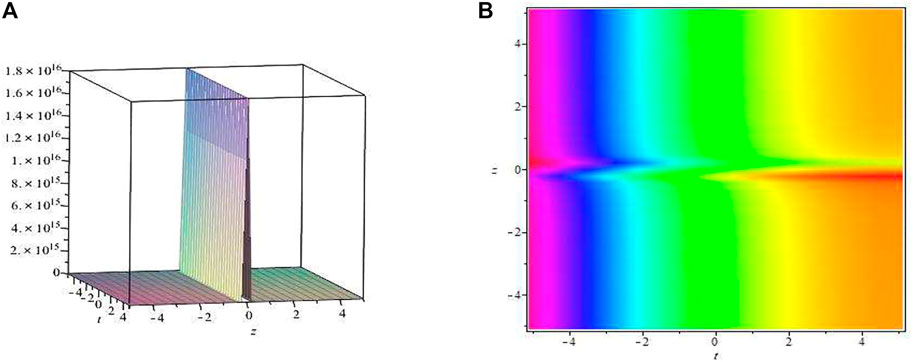
FIGURE 1. Singularity profile of (4.11).
Figure 2 describes the physical structure of the kink solution when t = 1, and the rest of the parameters take the value of y = 1, = 3, = 1, k = 1, l = 1, m = 1, = 1, = 1. When the time increases from t = 1 to t = 28, the energy of the wave is gradually depleted and eventually becomes a plane wave.

FIGURE 2. Annihilation of the kink wave solution of (4.34) at y =1.
The physical structure of the antisymmetric periodic solution (4.35) is shown in Figure 3. The 3-D plot of the antisymmetric periodic solution is described when the parameter is taken as z = 0, y = 0, = 1, = 1, k = 1, l = 1, m = 1, = 1, = −1. (B) show the density plot of the solution.
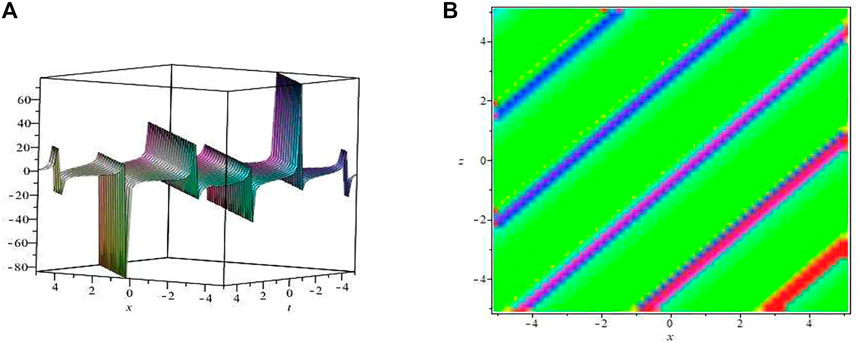
FIGURE 3. Multi period solution of (4.35).
The dynamics structure of the kink wave solution at z = 0 is plotted in Figure 4. When k = −10, c = 10, = 1, = −10, y = 1. (A) shows the 3-D plot of the solution and (B) depicts the spread route of the solution along the x-axis when t = 0, t = 1, t = 2 and t = 3, respectively.

FIGURE 4. The kink wave solution of (4.57) at z =0.
It is shown in Figure 5 and Figure 6 that the physical structure of the periodic wave solutions (4.58) and (4.68). (A) Is the corresponding 3D structure, (B) is the track of the solution along the x-axis, which is given when the parameterk = 1, = −1, = 1, r = 1, y = 0, z = 0 (4.68) shows the 3-D structure of the symmetric two-period wave solution, with the corresponding parameter a0 = 1, = 1, = 1, = 5, = 1, = 1, m = 1. (B) Depicts the spread route of the solution along the z-axis at t = 0.
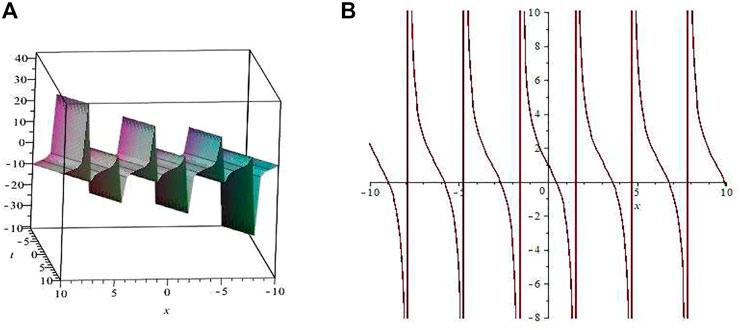
FIGURE 5. The periodic solution of (4.58) at z =0.
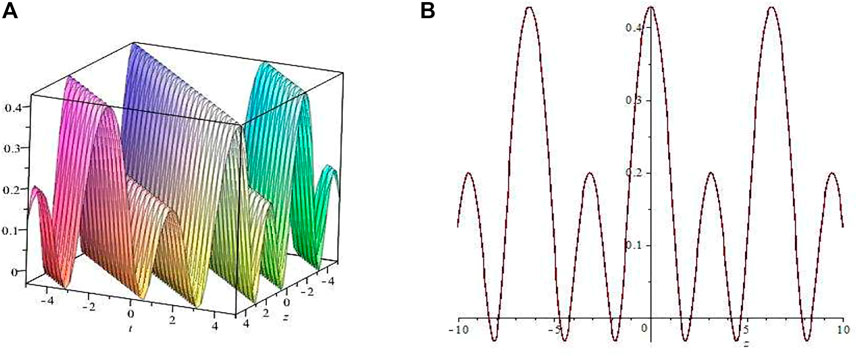
FIGURE 6. The symmetric two-periodic solution of (4.68).
A structure of the dynamics of the dark soliton (4.67) is depicted in Figure 7. The 3-D plot of the dark soliton is obtained when the parameter is selected as a0 = 1, = 1, = 1, = 1, = 2, = 1, m = 1. The spread route behavior of the dark soliton along the z-axis can be derived by choosing t = 0, t = 1, t = 2 and t = 3.
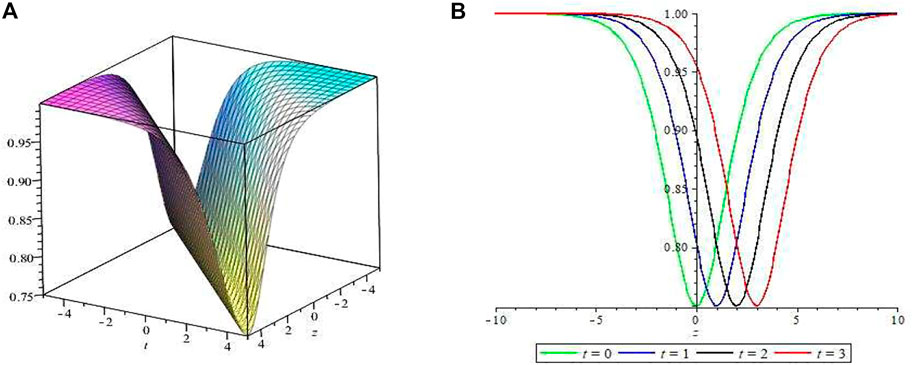
FIGURE 7. Dark soliton solution of (4.67).
6 Conclusion
In summary, the (3 + 1)-dimensional generalized Shallow Water-like wave equation is shown in this paper which is studied based on the Lie symmetry method and the symbolic calculation. By the adjoint table of the infinitesimal generators, a one-dimensional optimal system is formulated. In terms of the optimal system, some new solutions of the gSWl equation are derived by Exp
In this work, a situation of the (3 + 1)-dimensional gSWl equation has been investigated based on the Lie symmetry method, and the rest of the latter cases are presented in other subsequent papers. More work needs to be done in the future. Firstly, in this paper, the exact solutions of the equation are derived richly with the Lie symmetry method, and other methods can be employed for the solutions of the equation, such as the numerical analysis method [36–38]. Secondly, the natural properties of the solutions to the equation can be investigated further in subsequent studies through the generalized multi-symplectic method and the structure-preserving method [39–42].
Data availability statement
The original contributions presented in the study are included in the article/Supplementary Material, further inquiries can be directed to the corresponding author.
Author contributions
BY: Conceptualization, Methodology, Investigation, Formal analysis, Writing–original draft. YS: Software, Formal analysis. ZW: Conceptualization, Funding acquisition, Resources, Supervision, Writing–review and editing.
Funding
This work was supported by Natural Science Foundation of Shandong Province (Grant ZR2021MA084), the Natural Science Foundation of Liaocheng University (318012025), and Discipline with Strong Characteristics of Liaocheng University—Intelligent Science and Technology (319462208).
Conflict of interest
The authors declare that the research was conducted in the absence of any commercial or financial relationships that could be construed as a potential conflict of interest.
Publisher’s note
All claims expressed in this article are solely those of the authors and do not necessarily represent those of their affiliated organizations, or those of the publisher, the editors and the reviewers. Any product that may be evaluated in this article, or claim that may be made by its manufacturer, is not guaranteed or endorsed by the publisher.
References
1. Eslami M. Soliton-like solutions for the coupled Schrodinger-Boussinesq equation. Optik (2015) 126(23):3987–91. doi:10.1016/j.ijleo.2015.07.197
2. Eslami M, Mirzazadeh MA, Neirameh A. New exact wave solutions for Hirota equation. Pramana (2015) 84(1):3–8. doi:10.1007/s12043-014-0837-z
3. Gao XY, Guo YJ, Shan WR. Beholding the shallow water waves near an ocean beach or in a lake via a Boussinesq-Burgers system. Chaos, Solitons & Fractals (2021) 147:110875. doi:10.1016/j.chaos.2021.110875
4. Lan ZZ, Gao YT, Yang JW, Su CQ, Solitons BQM. Solitons, Bäcklund transformation and Lax pair for a (2+1)-dimensional Broer-Kaup-Kupershmidt system in the shallow water of uniform depth. Commun Nonlinear Sci Numer Simulation (2017) 44:360–72. doi:10.1016/j.cnsns.2016.07.013
5. Iqbal MA, Wang Y, Miah MM, Osman MS. Study on date-Jimbo-Kashiwara-Miwa equation with conformable derivative dependent on time parameter to find the exact dynamic wave solutions. Fractal and Fractional (2021) 6(1):4. doi:10.3390/fractalfract6010004
6. Yokus A, Durur H, Ahmad H, Yao SW. Construction of different types analytic solutions for the Zhiber-Shabat equation. Mathematics (2020) 8(6):908. doi:10.3390/math8060908
7. Chen SJ, Ma WX, Lü X. Bäcklund transformation, exact solutions and interaction behaviour of the (3+1)-dimensional Hirota-Satsuma-Ito-like equation. Commun Nonlinear Sci Numer Simulation (2020) 83:105135. doi:10.1016/j.cnsns.2019.105135
8. Rady ASA, Osman ES, Khalfallah M. The homogeneous balance method and its application to the Benjamin-Bona-Mahoney (BBM) equation. Appl Math Comput (2010) 217(4):1385–90. doi:10.1016/j.amc.2009.05.027
9. Bhutani G, Brito-Parada PR. Analytical solution for a three-dimensional non-homogeneous bivariate population balance equation-A special case. Int J Multiphase Flow (2017) 89:413–6. doi:10.1016/j.ijmultiphaseflow.2016.11.005
10. Kumar S, Kumar D, Kumar A. Lie symmetry analysis for obtaining the abundant exact solutions, optimal system and dynamics of solitons for a higher-dimensional Fokas equation. Chaos, Solitons & Fractals (2021) 142:110507. doi:10.1016/j.chaos.2020.110507
11. Ghanbari B, Kumar S, Niwas M, Baleanu D. The Lie symmetry analysis and exact Jacobi elliptic solutions for the Kawahara-KdV type equations. Results Phys (2021) 23:104006. doi:10.1016/j.rinp.2021.104006
12. Benoudina N, Zhang Y Y, Khalique CM. Lie symmetry analysis, optimal system, new solitary wave solutions and conservation laws of the Pavlov equation. Commun Nonlinear Sci Numer Simulation (2021) 94:105560. doi:10.1016/j.cnsns.2020.105560
13. Ma WX. Inverse scattering for nonlocal reverse-time nonlinear Schrddotodinger equations. Appl Math Lett (2020) 102:106161. doi:10.1016/j.aml.2019.106161
14. Ali Akbar M, Ali NHM. The improved F-expansion method with Riccati equation and its applications in mathematical physics. Cogent Math (2017) 4(1):1282577. doi:10.1080/23311835.2017.1282577
15. Akbulut A, Kaplan M, Tascan F. The investigation of exact solutions of nonlinear partial differential equations by using exp method. Optik (2017) 132:382–7. doi:10.1016/j.ijleo.2016.12.050
16. Hafez MG. Exact solutions to the (3+1)-dimensional coupled Klein-Gordon-Zakharov equation using exp xi-expansion method. Alexandria Eng J (2016) 55(2):1635–45. doi:10.1016/j.aej.2016.02.010
17. Li HM, Tian B, Xie XY, Chai J, Liu L, Gao YT. Soliton and rogue-wave solutions for a (2+1)-dimensional fourth-order nonlinear Schrodinger equation in a Heisenberg ferromagnetic spin chain. Nonlinear Dyn (2016) 86(1):369–80. doi:10.1007/s11071-016-2894-y
18. Peng WQ, Tian SF, Wang XB, Zhang TT, Fang Y. Riemann-Hilbert method and multi-soliton solutions for three-component coupled nonlinear Schrodinger equations. J Geometry Phys (2019) 146:103508. doi:10.1016/j.geomphys.2019.103508
19. Wang DS, Wang X. Long-time asymptotics and the bright N-soliton solutions of the Kundu–Eckhaus equation via the Riemann–Hilbert approach. Nonlinear Anal Real World Appl (2018) 41:334–61. doi:10.1016/j.nonrwa.2017.10.014
20. Huang QM, Gao YT, Jia SL, DengBilinear GF. Bilinear Bäcklund transformation, soliton and periodic wave solutions for a $$\varvec{(3 + 1)}$$ (3 + 1) -dimensional variable-coefficient generalized shallow water wave equation. Nonlinear Dyn (2017) 87(4):2529–40. doi:10.1007/s11071-016-3209-z
21. Huang QM, Gao YT. Bilinear form, bilinear Bäcklund transformation and dynamic features of the soliton solutions for a variable-coefficient (3+1)-dimensional generalized shallow water wave equation. Mod Phys Lett B (2017) 31(22):1750126. doi:10.1142/s0217984917501263
22. Kumar D, Kumar S. Some new periodic solitary wave solutions of (3+1)-dimensional generalized shallow water wave equation by Lie symmetry approach. Comput Math Appl (2019) 78(3):857–77. doi:10.1016/j.camwa.2019.03.007
23. Li YZ, Liu JG. Multiple periodic-soliton solutions of the (3+1)-dimensional generalised shallow water equation. Pramana (2018) 90(6):1–11.
24. Liu JG, He Y. New periodic solitary wave solutions for the (3+1)-dimensional generalized shallow water equation. Nonlinear Dyn (2017) 90(1):363–9. doi:10.1007/s11071-017-3667-y
25. Liu JG, Zhu WH. Breather wave solutions for the generalized shallow water wave equation with variable coefficients in the atmosphere, rivers, lakes and oceans. Comput Math Appl (2019) 78(3):848–56. doi:10.1016/j.camwa.2019.03.008
26. Tang YN, Ma WX, Xu W. Grammian and Pfaffian solutions as well as Pfaffianization for a (3+1)-dimensional generalized shallow water equation. Chin Phys B (2012) 21(7):070212. doi:10.1088/1674-1056/21/7/070212
27. Kumar D, Raju I, Paul GC, Ali ME, Haque MD. Characteristics of lump-kink and their fission-fusion interactions, rogue, and breather wave solutions for a (3+1)-dimensional generalized shallow water equation. Int J Comp Math (2022) 99(4):714–36. doi:10.1080/00207160.2021.1929940
28. Sadat R, Kassem M, Ma WX. Abundant lump-type solutions and interaction solutions for a nonlinear (3+1)-dimensional model. Adv Math Phys (2018) 2018:1–8. doi:10.1155/2018/9178480
29. Zhang Y, Dong H, Zhang X, Yang H. Rational solutions and lump solutions to the generalized (3+1)-dimensional Shallow Water-like equation. Comput Math Appl (2017) 73(2):246–52. doi:10.1016/j.camwa.2016.11.009
30. Olver PJ. Applications of Lie groups to differential equations. Springer Science & Business Media (1993).
31. Ovsjannikov LV. Group properties of differential equations. Novosibirsk: Siberian Section of the Academy of Science of USSR (1962).
32. Wang GW. Symmetry analysis, analytical solutions and conservation laws of a generalized KdV-Burgers-Kuramoto equation and its fractional version. Fractals (2021) 29(04):2150101. doi:10.1142/s0218348x21501012
33. Wang GW. A new (3+1)-dimensional schrödinger equation: Derivation, soliton solutions and conservation laws. Nonlinear Dyn (2021) 104(2):1595–602. doi:10.1007/s11071-021-06359-6
34. Wang GW. A novel (3+1)-dimensional sine-gorden and a sinh-gorden equation: Derivation, symmetries and conservation laws. Appl Math Lett (2021) 113:106768. doi:10.1016/j.aml.2020.106768
35. Hu X, Li Y, Chen Y. A direct algorithm of one-dimensional optimal system for the group invariant solutions. J Math Phys (2015) 56(5):053504. doi:10.1063/1.4921229
36. Hu WP, Deng ZC, Han S, Zhang WR. Generalized multi-symplectic integrators for a class of Hamiltonian nonlinear wave PDEs. J Comput Phys (2013) 235:394–406. doi:10.1016/j.jcp.2012.10.032
37. Hu WP, Wang Z, Zhao YP, Deng ZC. Symmetry breaking of infinite-dimensional dynamic system. Appl Math Lett (2020) 103:106207. doi:10.1016/j.aml.2019.106207
38. Hu WP, Ye J, Deng ZC. Internal resonance of a flexible beam in a spatial tethered system. J Sound Vibration (2020) 475:115286. doi:10.1016/j.jsv.2020.115286
39. Hu WP, Zhang CZ, Deng ZC. Vibration and elastic wave propagation in spatial flexible damping panel attached to four special springs. Commun Nonlinear Sci Numer Simulation (2020) 84:105199. doi:10.1016/j.cnsns.2020.105199
40. Hu WP, Huai YL, Xu MB, Feng XQ, Jiang RS, Zheng YP, et al. Mechanoelectrical flexible hub-beam model of ionic-type solvent-free nanofluids. Mech Syst Signal Process (2021) 159:107833. doi:10.1016/j.ymssp.2021.107833
41. Hu WP, Huai YL, Xu MB, Deng ZC. Coupling dynamic characteristics of simplified model for tethered satellite system. Acta Mechanica Sinica (2021) 37(8):1245–54. doi:10.1007/s10409-021-01108-9
Keywords: (3+1)-dimensional gSWl equation, Lie symmetry analysis, Riccati equation method, exact solutions, (G'/G) expansion method
Citation: Yang B, Song Y and Wang Z (2023) Lie symmetry analysis and exact solutions of the (3+1)-dimensional generalized Shallow Water-like equation. Front. Phys. 11:1131007. doi: 10.3389/fphy.2023.1131007
Received: 24 December 2022; Accepted: 16 January 2023;
Published: 16 February 2023.
Edited by:
Gangwei Wang, Hebei University of Economics and Business, ChinaReviewed by:
Weipeng Hu, Northwestern Polytechnical University, ChinaZhenli Wang, Zaozhuang University, China
Cheng Chen, Xi’an University of Posts and Telecommunications, China
Copyright © 2023 Yang, Song and Wang. This is an open-access article distributed under the terms of the Creative Commons Attribution License (CC BY). The use, distribution or reproduction in other forums is permitted, provided the original author(s) and the copyright owner(s) are credited and that the original publication in this journal is cited, in accordance with accepted academic practice. No use, distribution or reproduction is permitted which does not comply with these terms.
*Correspondence: Zenggui Wang, d2FuZ3plbmdndWlAbGN1LmVkdS5jbg==
 Ben Yang
Ben Yang Yunjia Song
Yunjia Song Zenggui Wang
Zenggui Wang